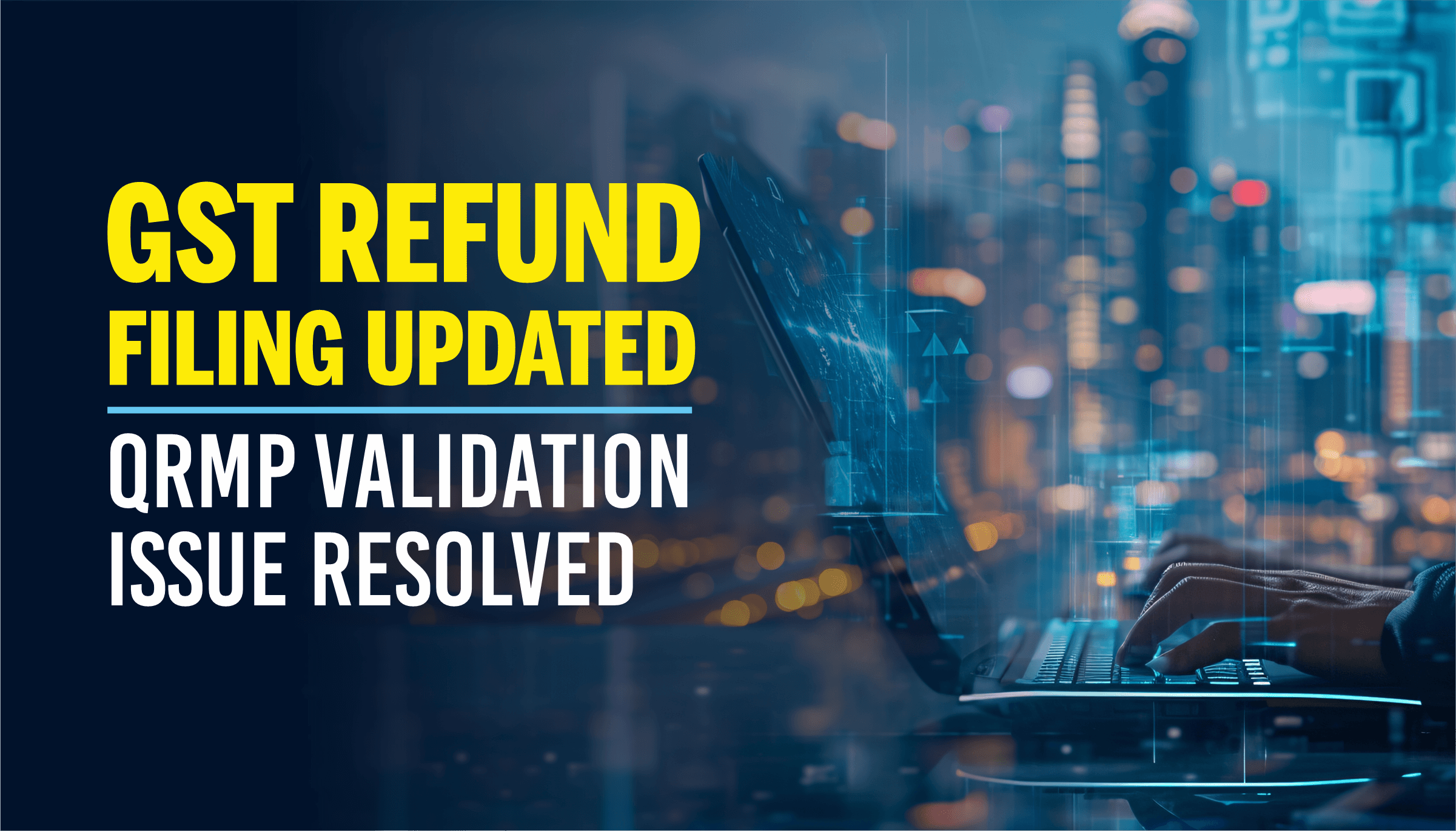GST Refund Filing Updated – QRMP Validation Issue Resolved

In a significant update for GST-registered businesses, a system-level validation was deployed on the GST portal in May 2025. This update enforces the provisions laid out in Para 6 of Circular No. 125/44/2019-GST dated 18.11.2019. The move aims to tighten compliance norms and streamline the refund application process.
What Does the Rule Say?
As per the circular, taxpayers must file all due returns in FORM GSTR-1 and FORM GSTR-3B before they can apply for any GST refund. However, certain categories—such as composition taxpayers, non-resident taxable persons, and Input Service Distributors (ISDs)—have different requirements. They must file their respective returns like GSTR-4, GSTR-5, or GSTR-6, depending on the category they fall under.
The Technical Issue Faced by QRMP Taxpayers
After the new validation system went live, taxpayers under the Quarterly Return Monthly Payment (QRMP) scheme faced unexpected problems:
-
Invoices filed through IFF (Invoice Furnishing Facility) for the first two months (M1 and M2) of a quarter were not being recognized by the system.
-
Even if GSTR-1 of the previous quarter was already filed, the system wrongly asked for returns for M1 and M2 of the current quarter.
-
This issue particularly affected those trying to file refunds between two quarters.
What Has Changed Now?
The technical glitch has been fixed.
Taxpayers under the QRMP scheme can now:
-
File refund applications for invoices already covered under a filed GSTR-3B.
-
Ensure that only such invoices are included in the refund application.
-
Avoid including invoices filed through IFF if the corresponding GSTR-3B has not yet been filed.
What You Should Do
If you are planning to file a refund claim:
-
Double-check that all relevant GSTR-1 and GSTR-3B returns are filed up to the date of the application.
-
For QRMP scheme taxpayers, ensure that the GSTR-3B covering the IFF invoices is filed before including them in the refund request.
-
Do not include invoices from IFF if they are yet to be declared in GSTR-3B.
Why This Is Important
This validation ensures that only compliant taxpayers receive refunds, reducing the risk of errors or fraudulent claims. It also helps maintain better data consistency across the GST portal.
